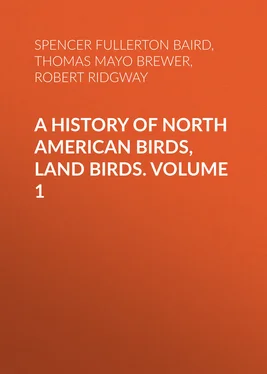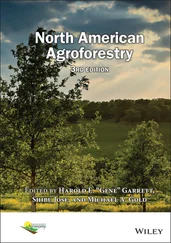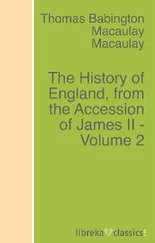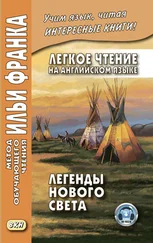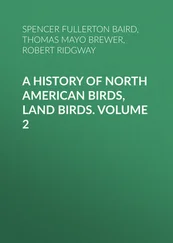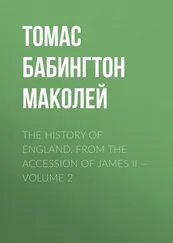Robert Ridgway - A History of North American Birds, Land Birds. Volume 1
Здесь есть возможность читать онлайн «Robert Ridgway - A History of North American Birds, Land Birds. Volume 1» — ознакомительный отрывок электронной книги совершенно бесплатно, а после прочтения отрывка купить полную версию. В некоторых случаях можно слушать аудио, скачать через торрент в формате fb2 и присутствует краткое содержание. Жанр: foreign_antique, Биология, foreign_edu, на английском языке. Описание произведения, (предисловие) а так же отзывы посетителей доступны на портале библиотеки ЛибКат.
- Название:A History of North American Birds, Land Birds. Volume 1
- Автор:
- Жанр:
- Год:неизвестен
- ISBN:нет данных
- Рейтинг книги:3 / 5. Голосов: 1
-
Избранное:Добавить в избранное
- Отзывы:
-
Ваша оценка:
- 60
- 1
- 2
- 3
- 4
- 5
A History of North American Birds, Land Birds. Volume 1: краткое содержание, описание и аннотация
Предлагаем к чтению аннотацию, описание, краткое содержание или предисловие (зависит от того, что написал сам автор книги «A History of North American Birds, Land Birds. Volume 1»). Если вы не нашли необходимую информацию о книге — напишите в комментариях, мы постараемся отыскать её.
A History of North American Birds, Land Birds. Volume 1 — читать онлайн ознакомительный отрывок
Ниже представлен текст книги, разбитый по страницам. Система сохранения места последней прочитанной страницы, позволяет с удобством читать онлайн бесплатно книгу «A History of North American Birds, Land Birds. Volume 1», без необходимости каждый раз заново искать на чём Вы остановились. Поставьте закладку, и сможете в любой момент перейти на страницу, на которой закончили чтение.
Интервал:
Закладка:
Brownish-olive above, somewhat more rufescent on wing; breast and head strongly washed with dilute rufous. Spots on breast narrow, scarcely darker than back. Wing, 3.85; tail, 3.00; culmen, .70; tarsus, 1.10. Hab. Pacific Province of United States. Guatemala … var. ustulatus .
C.Above olivaceous, becoming abruptly more reddish on upper tail-coverts and tail. Spots as in swainsoni , but larger and less transverse,—more sharply defined. An orbital ring of pale buff. Nest on ground; eggs blue, probably unspotted.
5. T. pallasi.
Olivaceous of upper parts like ustulatus . Reddish of upper tail-coverts invading lower part of rump; no marked difference in tint between the tail and its upper coverts. Flanks and tibiæ yellowish olive-brown; a faint tinge of buff across the breast. Eggs plain. Wing, 3.80; tail, 3.00; culmen, .70; tarsus, 1.20. Hab. Eastern Province of United States (only?) … var. pallasi .
Olivaceous of upper parts like swainsoni . Reddish of tail not invading the rump, and the tail decidedly more castaneous than the upper coverts. Beneath almost pure white; scarcely any buff tinge on breast; flanks and tibiæ grayish or plumbeous olive. Size smaller than swainsoni ; bill depressed. Wing, 3.50; tail, 2.60; culmen, .60; tarsus, 1.15. Hab. Western Province of North America, from Kodiak to Cape St. Lucas. East to East Humboldt Mountains … var. nanus .
Olivaceous above, like preceding; the upper tail-coverts scarcely different from the back. Tail yellowish-rufous. Beneath like nanus . Size larger than swainsoni . Wing, 4.20; tail, 3.35; culmen, .80; tarsus, 1.30. Hab. Rocky Mountains. From Fort Bridger, south (in winter) to Southern Mexico … var. auduboni .
Turdus mustelinus , Gmelin, Syst. Nat. I, 1788, 817.—Audubon, Orn. Biog. I, 1832, 372, pl. 73.—Ib. Birds Am. III, 1841, 24, pl. 144.—D’Orb. La Sagra’s Cuba Ois. 1840, 49.—Baird, Birds N. Am. 1858, 212.—Ib. Rev. Am. Birds, 1864, 13.—Sclater, P. Z. S. 1856, 294, and 1859, 325.—Jones, Nat. in Bermuda, 26.—Gundlach, Repertorio, 1865, 228.—Maynard.—Samuels, 146. Turdus melodus , Wils. Am. Orn. I, 1808, 35, pl. ii. Turdus densus , Bonap. Comptes Rendus, XXVIII, 1853, 2.—Ib. Notes Delattre, 1854, 26 (Tabasco).
Additional figures: Vieillot, Ois. Am. Sept. II, pl. lxii.—Wilson, Am. Orn. I, pl. ii.
Sp. Char. Above clear cinnamon-brown, on the top of the head becoming more rufous, on the rump and tail olivaceous. The under parts are clear white, sometimes tinged with buff on the breast or anteriorly, and thickly marked beneath, except on the chin and throat and about the vent and tail-coverts, with sub-triangular, sharply defined spots of blackish. The sides of the head are dark brown, streaked with white, and there is also a maxillary series of streaks on each side of the throat, the central portion of which sometimes has indications of small spots. Length, 8.10 inches; wing, 4.25; tail, 3.05; tarsus, 1.26. Young bird similar to adult, but with rusty yellow triangular spots in the ends of the wing coverts.
Hab. U. S. east of Missouri plains, south to Guatemala. Bermuda (not rare). Cuba, La Sagra; Gundlach. Honduras, Moore. Cordova, Scl. Orizaba (winter), Sumichr.
Habits. The Wood Thrush, without being anywhere a very abundant species, is common throughout nearly every portion of the United States between the Mississippi River and the Atlantic. It breeds in every portion of the same extended area, at least as far as Georgia on the south and Massachusetts on the north. Beyond the last-named State, it rarely, if ever, breeds on the coast. In the interior it has a higher range, nesting around Hamilton, C. W. So far as I am aware it is unknown, or very rare, in the States of Vermont, New Hampshire, and Maine.
It makes its appearance early in April in the Middle States, but in New England not until four or five weeks later, appearing about the 10th of May. Their migrations in fall are more irregular, being apparently determined by the abundance of their food. At times they depart as early as the first of September, but sometimes not until the last of October. It winters in Central America, where it is quite abundant at that season.
The favorite localities of the Wood Thrush are the borders of dense thickets, or low damp hollows shaded by large trees. Yet its habits are by no means so retiring, or its nature so timid, as these places of resort would lead us to infer. A small grove in Roxbury, now a part of Boston, in close proximity to a dwelling-house, was for many years the favorite resort of these birds, where several pairs nested and reared their young, rarely even leaving their nests, which were mostly in low bushes, wholly unmindful of the curious children who were their frequent visitors. The same fearless familiarity was observed at Mount Auburn, then first used as a public cemetery. But in the latter instance the nest was always placed high up on a branch of some spreading tree, often in conspicuous places, but out of reach. Mr. J. A. Allen refers to several similar instances where the Wood Thrush did not show itself to be such a recluse as many describe it. In one case a pair built their nest within the limits of a thickly peopled village, where there were but few trees, and a scanty undergrowth. In another a Wood Thrush lived for several successive summers among the elms and maples of Court Square in the city of Springfield, Mass., undisturbed by the passers by or the walkers beneath, or the noise and rattle of the vehicles on the contiguous streets.
The song of this thrush is one of its most remarkable and pleasing characteristics. No lover of sweet sounds can have failed to notice it, and, having once known its source, no one can fail to recognize it when heard again. The melody is one of great sweetness and power, and consists of several parts, the last note of which resembles the tinkling of a small bell, and seems to leave the conclusion suspended. Each part of its song seems sweeter and richer than the preceding.
The nest is usually built on the horizontal branch of a small forest-tree, six or eight feet from the ground, and, less frequently, in the fork of a bush. The diameter is about 5 inches, and the depth 3¾, with a cavity averaging 3 inches across by 2¼ in depth. They are firm, compact structures, chiefly composed of decayed deciduous leaves, closely impacted together, and apparently thus combined when in a moistened condition, and afterward dried into a firmness and strength like that of parchment. These are intermingled with, and strengthened by, a few dry twigs, and the whole is lined with fine roots and a few fine dry grasses. Occasionally, instead of the solid frame of impacted leaves, we find one of solidified mud.
The eggs of the Wood Thrush, usually four in number, sometimes five, are of a uniform deep-blue tint, with but a slight admixture of yellow, which imparts a greenish tinge. Their average measurements are 1.00 by .75 inch.
Turdus mustelinus , Wilson, Amer. Ornithology, V, 1812, 98, pl. 43 (not of Gmelin).
Turdus fuscescens , Stephens, Shaw’s Gen. Zoöl. Birds, X, I, 1817, 182. Cab. Jour. 1855, 470 (Cuba).—Baird, Birds N. Am. 1858, 214.—Ib. Rev. Am. B. 1864, 17.—Gundi. Repertorio, 1865, 228 (Cuba, not rare). Pelzeln, Orn. Bras. II, 1868, 92. (San Vicente, Brazil, December.)—Samuels, 150.—Sclater, P. Z. S. 1859, 326.—Ib. Catal. Am. Birds, 1861, 2, No. 10. Turdus silens , Vieill. Encyclop. Méth. II, 1823, 647 (based on T. mustelinus , Wils.). Turdus wilsonii , Bon. Obs. Wils. 1825, No. 73. Turdus minor , D’Orb. La Sagra’s Cuba, Ois. 1840, 47, pl. v (Cuba).
Читать дальшеИнтервал:
Закладка:
Похожие книги на «A History of North American Birds, Land Birds. Volume 1»
Представляем Вашему вниманию похожие книги на «A History of North American Birds, Land Birds. Volume 1» списком для выбора. Мы отобрали схожую по названию и смыслу литературу в надежде предоставить читателям больше вариантов отыскать новые, интересные, ещё непрочитанные произведения.
Обсуждение, отзывы о книге «A History of North American Birds, Land Birds. Volume 1» и просто собственные мнения читателей. Оставьте ваши комментарии, напишите, что Вы думаете о произведении, его смысле или главных героях. Укажите что конкретно понравилось, а что нет, и почему Вы так считаете.
